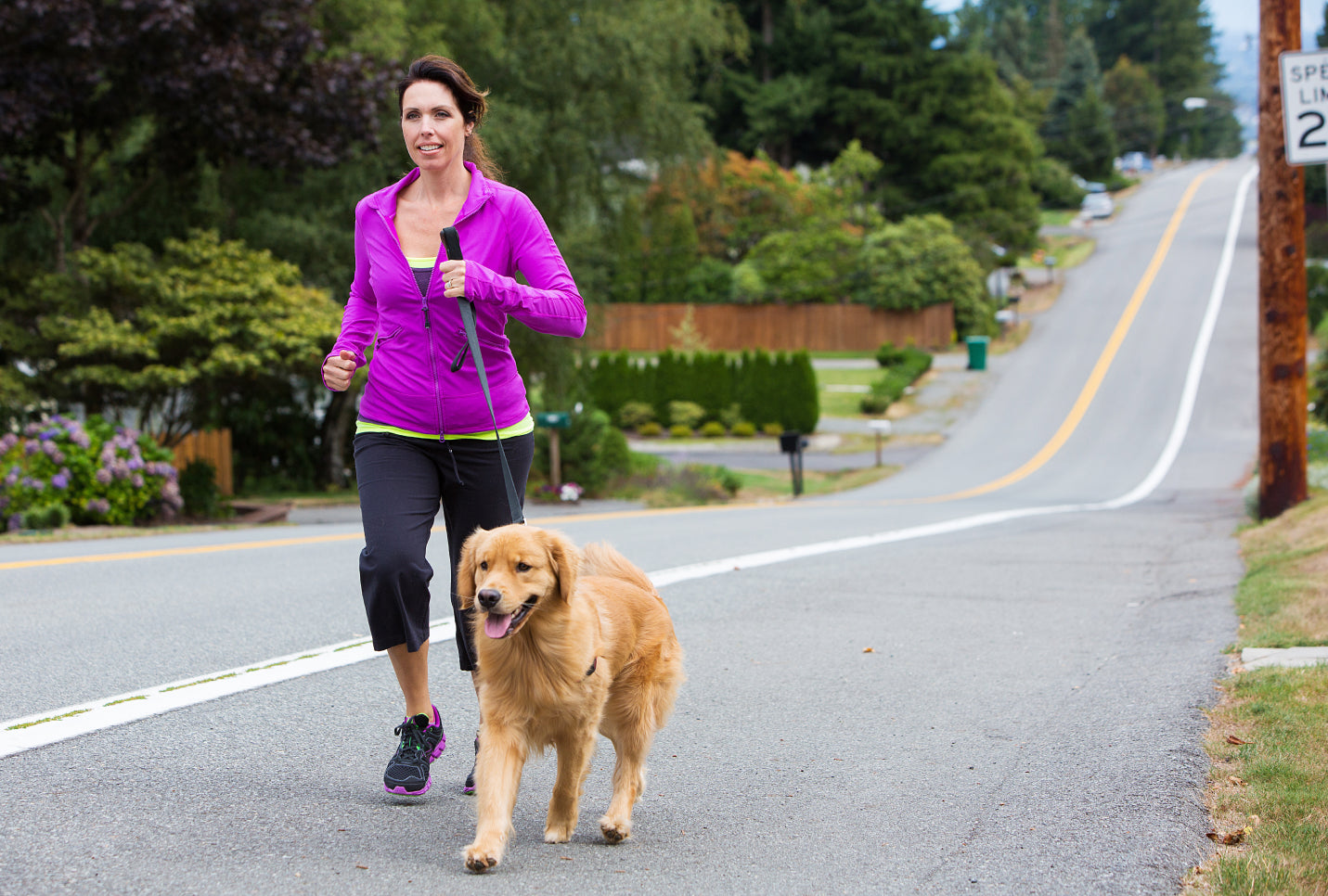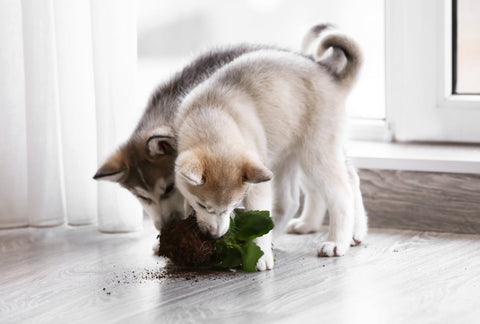
How Much Exercise Does a Dog Need?
As a pet parent, ensuring your furry friend leads a happy and healthy life is undoubtedly one of your top priorities. A key component of this well-being is regular exercise, which plays a crucial role in your dog's physical health and emotional contentment.
But how much exercise does your dog need every day? This is where things get a bit more nuanced. The exercise requirements for dogs are not one-size-fits-all. They depend on various factors, such as the dog's age, size, and breed.
In this comprehensive guide, we'll delve into the specific exercise needs of different age groups, sizes, and breeds of dogs to help you provide the best care for your four-legged companion.
The Importance of Exercise for Dogs
Like humans, dogs need daily exercise to stay fit and healthy. Regular physical activity helps manage their weight, ensuring they remain within a healthy range and avoiding obesity-related health complications.
It also aids in maintaining heart health, strengthening muscles, and improving joint flexibility, which is especially crucial for breeds prone to joint issues.
Moreover, exercise isn't just about physical health — it also significantly impacts your dog's emotional well-being. Regular activity provides mental stimulation, reduces anxiety, and curbs behavioral issues stemming from restlessness or boredom.
Does Diet Affect My Dogs' Health?
It's also important to remember that physical exercise goes hand in hand with a nutritious diet. Combining an appropriate amount of exercise with a balanced diet, like what A Pup Above offers, provides a comprehensive approach to your pet's health.
Our gently cooked, sous-vide food, rich in palatability, flavor, and nutrition, matches perfectly with your dog's active lifestyle.
In the following sections, we will delve deeper into how exercise requirements change based on your dog's age, size, and breed, ensuring you have all the information to keep your pup both active and happy.
Do Puppies and Adults Need Different Activity?
Through the developmental years of your pup, exercise requirements slightly change. Like humans, young pups need to get outside and run around, burning off some extra energy. Age causes some slight aches and pains, causing many to slow down how much they want to run around.
Puppies
Puppies are bundles of energy. Their curiosity and playfulness drive them to be active and explore their surroundings, naturally providing them with lots of exercise.
However, because their bones and joints are still developing, it's crucial to ensure their playtime doesn't get too intense. A common injury in small puppies is a dislocation of the growth plate along the knee, which ultimately derives from twisting or turning too hard during early development.
Typically, five minutes of exercise per month of age, up to twice a day, is a good rule of thumb. For instance, a four-month-old puppy should have about 20 minutes of structured exercise, like a gentle walk or a controlled play session, twice a day.
Alongside this, free play in a safe and supervised environment should be encouraged.
With mental development in mind, you should try to interact and engage with your pup during these play sessions.
Young Dogs
As your dog grows away from their puppy stage and towards their “teenage years” around the one to two-year-old mark, it’s important to focus more on consistent training and longer walks or runs.
During this time, your dog’s natural metabolism is developing. This is a great time to encourage extra exercise to decrease the risk of medical issues down the road.
Adult Dogs
As dogs grow and mature, their energy levels may plateau, but they still require regular exercise to keep them fit and mentally stimulated.
Depending on their breed and health status, adult dogs should ideally get at least one hour of exercise daily. This could be a mix of walks, play sessions, and other physical activities such as fetch, tug-of-war, or agility training.
Remember, mental stimulation is just as important. Puzzle toys, obedience training, or hide-and-seek games can keep your adult dog mentally sharp.
Senior Dogs
As dogs enter their golden years, they may not be as energetic as they once were. That, however, doesn't mean exercise should be neglected. On the contrary, maintaining regular, gentle exercise is key to keeping them healthy and managing conditions like arthritis.
Senior dogs should still be encouraged to engage in short, less intense exercise sessions, such as leisurely walks or gentle playtime, to keep their joints flexible and maintain muscle mass.
The length and intensity of the exercise should be tailored to their comfort level and overall health status.
If your older dog seems stiff or sore after exercise, it might be time to dial back the intensity or duration. Don’t be afraid to slowly and gently help your dog stretch and flex aching joints, similar to light yoga.
A balanced, nutritious diet from A Pup Above can support your dog's exercise regimen in all life stages. Providing your dog with the right nutrients supports their energy needs, promotes healthy weight, and maintains overall health.
Does a Small Dog Need the Same Exercise as a Large Dog?
While every dog is a little different, their size may help you understand their exercise needs. A small breed dog will get more exercise out of running a mile than a large dog will, simply due to how long their legs may reach.
Small Dogs
Don't let their size fool you; small dogs can pack a punch when it comes to energy levels. Despite their small stature, breeds like Jack Russell Terriers, Dachshunds, or Chihuahuas still need regular exercise.
Typically, around 30 to 60 minutes of physical activity per day will suffice for most small breeds. This can include short walks, indoor play sessions, and mental stimulation through puzzle toys or interactive games.
Medium Dogs
Medium-sized dogs, like Border Collies, Norwegian Elkhounds, or Bulldogs, require a moderate amount of exercise, often between one and two hours each day. This can be broken down into walks, active play sessions, and mentally stimulating activities like training sessions or agility exercises.
Always remember that individual activity levels can vary greatly even within the same size group, and breed characteristics play a significant role.
Large Dogs
Larger breed dogs such as Labrador Retrievers, German Shepherds, Standard Poodles, Huskies, or Golden Retrievers often need the most exercise, typically around one to two hours daily.
This is especially important for working breeds, who were bred for physical tasks and high energy levels. Activities such as long walks, hikes, swimming, or playing fetch can be great ways to keep these dogs active and healthy.
However, always be mindful of their joint health, as large breeds can be prone to hip and elbow dysplasia.
Do Exercise Needs Change By Breed?
Different breeds have different energy levels and exercise requirements. Researching your specific breed for a more accurate understanding of their exercise needs is important.
High-energy breeds like Border Collies or Australian Shepherds typically require more exercise — often upwards of two hours per day. They thrive with activities like agility training, herding, or long hikes.
On the other end of the spectrum, low-energy breeds such as Basset Hounds or Bulldogs may require less physical activity. Around 30 minutes to an hour of exercise per day is typically sufficient.
A simple way to consider the breed requirements is to look at the intended use of the dog over generations. If a dog was used for hunting, herding, or other types of work, then they likely need more exercise per day to avoid obesity or other health issues.
Breeds with specific health considerations, like brachycephalic (flat-faced) dogs, may require modified exercise plans to ensure their safety. These breeds often struggle with intense or prolonged exercise, so shorter, more frequent sessions might be more suitable.
Consulting your vet to understand the health risks associated with specific breeds will help you create an exercise plan and requirements. Dogs who commonly experience obesity often need to run, and without that common exercise, they begin to grow obese.
Tips for Exercising Your Dog
Here are a few quick tips to make the most out of your dog's exercise routine:
- Gradually increase the intensity and duration of exercise to avoid overexertion.
- Choose the right time for exercise, preferably during cooler parts of the day.
- Make sure your dog stays hydrated during exercise.
- Mix up the activities to keep them interesting and engaging for your dog.
- Always consult with your vet for personalized advice based on your dog's health and specific needs.
Remember, exercise for your dog also means exercise for you. Follow similar guidelines for your own health.
Let’s Get Walking
Determining how much exercise your dog needs depends on several factors, including their age, size, and breed.
A balanced approach that includes appropriate exercise and a healthy diet, like the nutrition-packed meals from A Pup Above, is key to maintaining your furry friend's overall health. As always, when in doubt, consult with your veterinarian to better understand your pet's specific needs.
After all, keeping your pup both active and healthy is an important part of ensuring their happiness.
Sources:
Nutritional advantages of sous‐vide cooking | National Library of Medicine
Top Stories

Why Do Dogs Lick Their Paws?

Why Do Dogs Whimper & Make Noises in Their Sleep?

Healthy Vet-Approved Homemade Dog Food Recipes

How To Cook Sweet Potatoes for Dogs





















